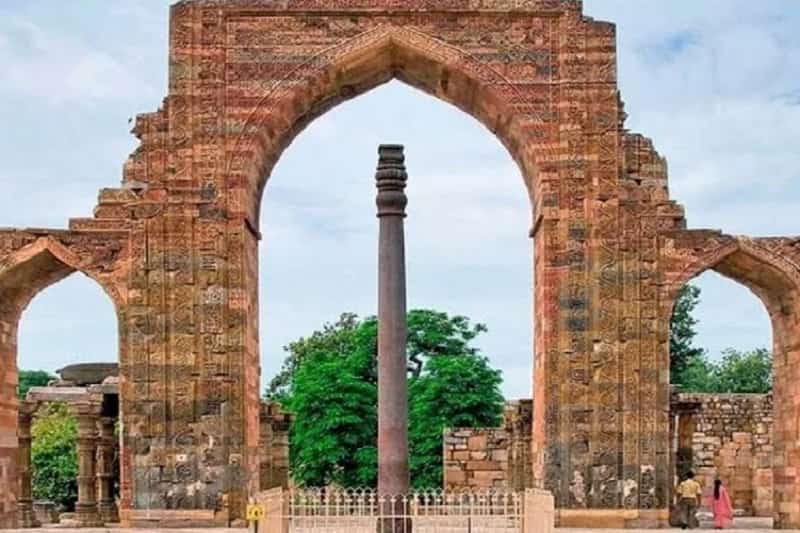Delhi is a city of many religions and cultures, about which everyone remains impatient to know about its rich history. Not only locals, but foreigners also keep coming to explore different historical places there. The city has several monuments that are recognized for their fascinating architecture, one such renowned place is the Qutub Minar. In the Qutb complex, there stands an iron pillar famous for its rust-resistant behavior, that is, despite being made of iron, it has not yet rusted.
Read:-Top 12 Historical Wonders Of India That Everyone Should Visit Once
This 1600-year-old pillar is made of ninety-eight percent iron and has been standing under the open sky for centuries but despite this, it did not undergo the rusting process. The pillar is believed to have been constructed by King Chandragupta Vikramaditya, who ruled from 375 to 415 CE. The Pillar's height is 7.21 meters visible from top to bottom of its base and its hidden part is 3 feet 8 inches, which is below the ground. It weighs more than 6 tonnes. But now the pillar had become a puzzle for historians as even after so many years, the iron pillar's rust-free behavior was no less than a miracle. So in the year 1998, Professor Balasubramaniam of IIT Kanpur did an experiment to uncover its mystery.
Read:-Agrasen Ki Baoli - A Stepwell That Can Incite Someone To Suicide
During the research, he found that while making the pillar, phosphorus was added to the molten cast iron, which is capable of retarding corrosion. Actually, rusted objects are cleaned with phosphorus, because the rust dissolves in it. Chemical tests have shown that the pillar has been constructed by joining together several pieces of hot iron weighing 20-30 kg each. But the biggest question is, was the technology of joining hot iron pieces so advanced in that period? Because those pieces are joined in such a way that not a single joint is visible in the entire pillar.
Read:-The Mystery Of The Hanging Pillar In Veerabhadra Temple
It is believed that more amount of phosphorus was added to the pillar while making it, that's why even today the rust could not hold its grip on it. Now the world believes that phosphorus was first discovered by Hennig Brand in 1669, but this pillar construction was done 1600 years ago. This means the people of previous ages were already quite familiar with the knowledge of these metals, which proves one thing for sure even in ancient times the knowledge of metallurgy was of high quality.














0 comments:
Post a Comment